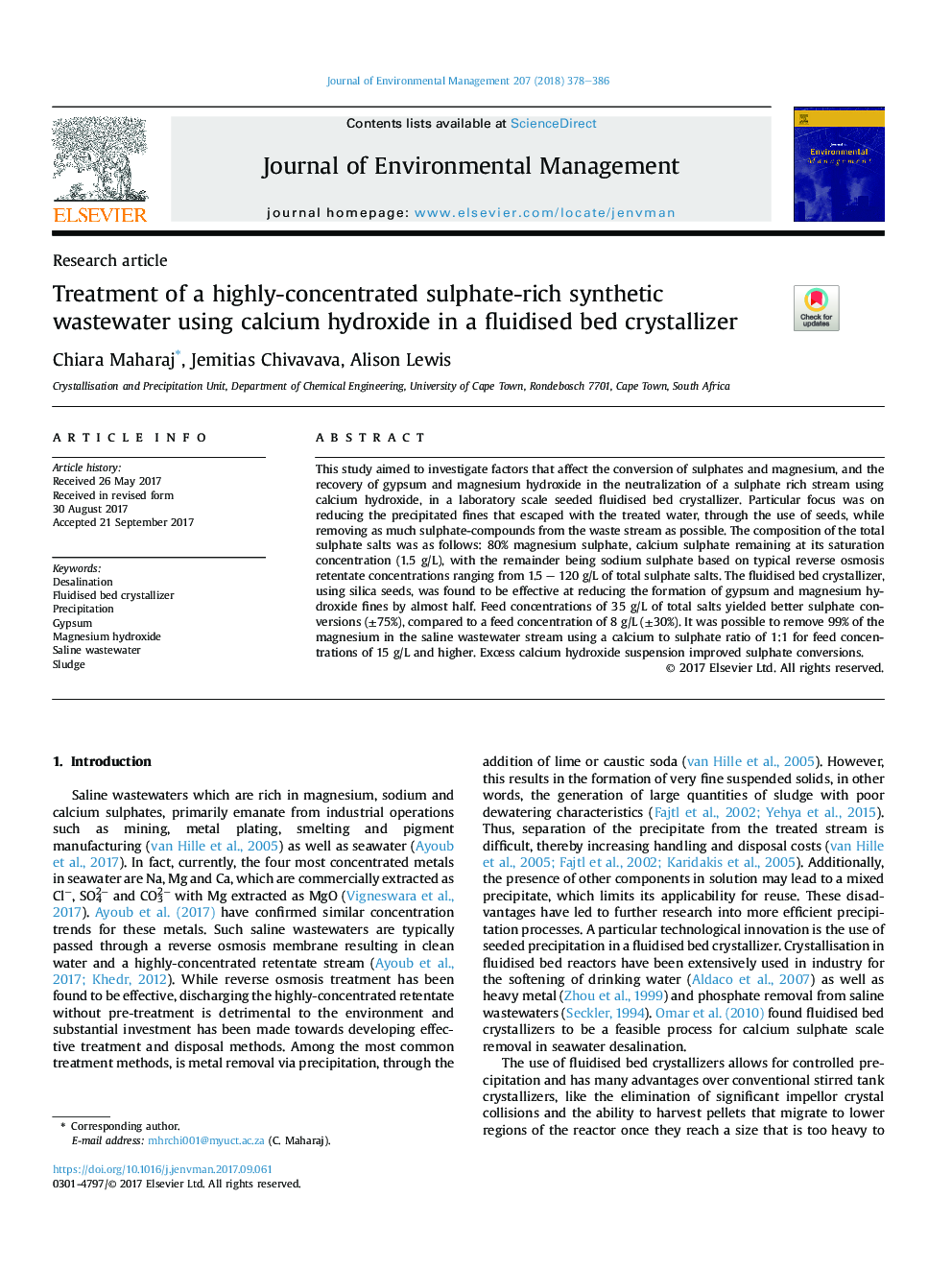| Article ID | Journal | Published Year | Pages | File Type |
|---|---|---|---|---|
| 7478595 | Journal of Environmental Management | 2018 | 9 Pages |
Abstract
This study aimed to investigate factors that affect the conversion of sulphates and magnesium, and the recovery of gypsum and magnesium hydroxide in the neutralization of a sulphate rich stream using calcium hydroxide, in a laboratory scale seeded fluidised bed crystallizer. Particular focus was on reducing the precipitated fines that escaped with the treated water, through the use of seeds, while removing as much sulphate-compounds from the waste stream as possible. The composition of the total sulphate salts was as follows: 80% magnesium sulphate, calcium sulphate remaining at its saturation concentration (1.5 g/L), with the remainder being sodium sulphate based on typical reverse osmosis retentate concentrations ranging from 1.5 - 120 g/L of total sulphate salts. The fluidised bed crystallizer, using silica seeds, was found to be effective at reducing the formation of gypsum and magnesium hydroxide fines by almost half. Feed concentrations of 35 g/L of total salts yielded better sulphate conversions (±75%), compared to a feed concentration of 8 g/L (±30%). It was possible to remove 99% of the magnesium in the saline wastewater stream using a calcium to sulphate ratio of 1:1 for feed concentrations of 15 g/L and higher. Excess calcium hydroxide suspension improved sulphate conversions.
Related Topics
Physical Sciences and Engineering
Energy
Renewable Energy, Sustainability and the Environment
Authors
Chiara Maharaj, Jemitias Chivavava, Alison Lewis,
